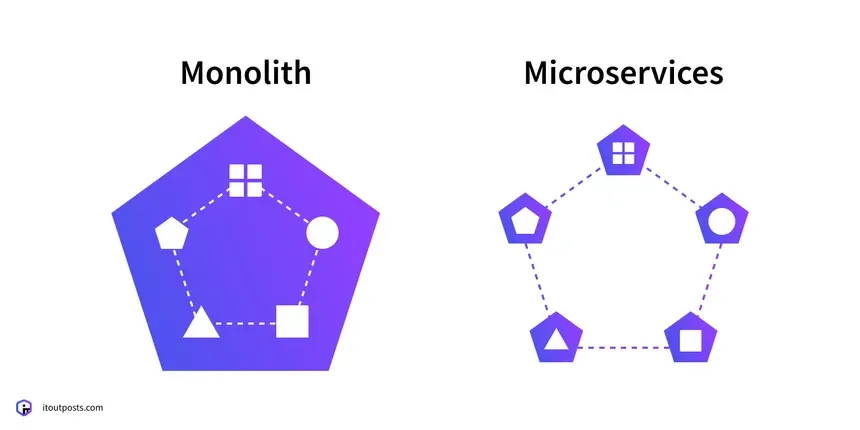Looking at Free Nutritious Meals Through a Data Lens: Solution or Delusion

The Free Nutritious Meal Program initiated by the Prabowo government is part of a larger initiative to improve the quality of nutrition and health of the Indonesian people. By providing free nutritious food, this program is expected to reduce malnutrition rates, improve public health, and provide better opportunities for children to develop optimally (Khomsan, 2024). First implemented in 2025 with an initial budget of IDR 71 trillion, this program targets various vulnerable community groups such as school children, toddlers, pregnant women, and breastfeeding mothers at 190 distribution points spread across 26 provinces. This program will work with local public kitchens, restaurants, and food companies to ensure the provision of nutritious food that meets established nutritional standards. Implementation in the field shows that the Free Nutritious Meal (MBG) program has a significant positive impact, but is not without challenges. Some of the challenges faced include logistical distribution, funding sustainability, and the need to ensure that the food provided meets the required nutritional standards (Sulaiman, 2024)
This program does not only focus on food distribution, but also involves nutrition education to encourage healthy eating patterns among beneficiaries. With this approach, the program aims to meet one-third of the recipient's daily calorie needs and simultaneously reduce stunting rates and improve the quality of education by improving children's health and school attendance. Despite the logistical and funding sustainability challenges, innovations in the use of technology to monitor and manage distribution and the involvement of the private sector have helped increase the effectiveness and reach of the program. With a target of 82.9 million recipients of the free nutritious meal program by 2029, the Free Nutritious Meal program under President Prabowo's leadership is expected to improve the quality of nutrition and health of the Indonesian people, especially school children.
Looking at the Data
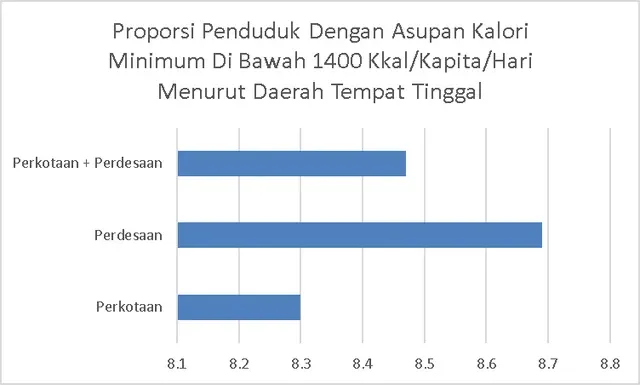
source: BPS
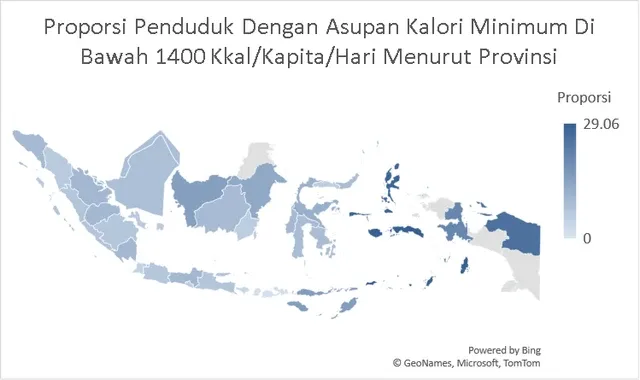
source: BPS
According to data from the Central Statistics Agency (BPS) in 2019, around 8.47% of Indonesia's population has a calorie intake of less than 1,400 kcal per day. If we calculate based on the population of Indonesia in 2024 which will reach 281 million people, this figure is equivalent to more than 23 million people. This condition is a serious concern, especially because of the gap between regions which is still quite striking. Provinces in eastern Indonesia, for example, tend to have a much higher proportion of people with low calorie intake than the western region. This inequality reflects a major challenge in efforts to equalize access to nutritional needs in various regions.
In addition, the prevalence of inadequate food consumption is also an important issue. Based on BPS data in 2023, around 8.53% of the population experiences inadequate food consumption, which means they do not get enough energy intake for their daily activities. Although this figure is better than the previous year which reached 10.21%, the problem of inequality between regions is still very pronounced. The eastern region of Indonesia still shows quite striking differences compared to other regions.
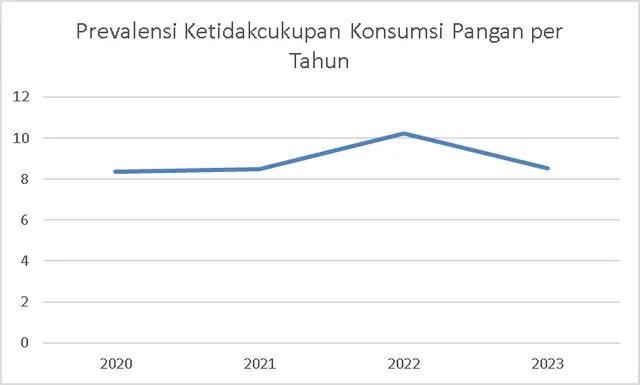
source: BPS
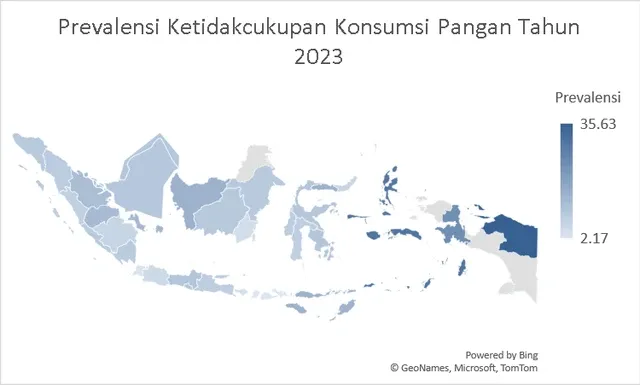
source: BPS
Referring to international standards set by the Food and Agriculture Organization (FAO), the average calorie consumption per capita in Indonesia is still relatively low. According to information from the Indonesia Baik website, FAO recommends that every adult should consume at least 1,800 kcal per day. This amount is of course adjusted to the age, gender, and level of physical activity of each individual. This lack of calorie intake has the potential to trigger various health problems, such as anemia, growth disorders in children, and decreased work productivity.
This problem is further exacerbated by the high prevalence of stunting in Indonesia. Based on UNICEF and WHO data in 2022 quoted from the Kemenkopmk website, as many as 21.6% of children in Indonesia experience stunting. This figure places Indonesia in 27th place out of 154 countries with the highest stunting rates, even ranking 5th in Asia. This condition shows the importance of immediate intervention through programs such as free nutritious meals to reduce stunting rates and improve people's quality of life.
Benefits and Expectations
The Free Nutritious Meal Program (MBG) is aimed at students from both public and private schools, as well as Islamic boarding schools. MBG also targets pregnant women, breastfeeding mothers, and toddlers. This program was launched with the aim of addressing the current problem of malnutrition. By providing free nutritious food, this program ensures that children and infants receive sufficient nutritional intake to support their physical and mental growth. Thus, it is hoped that there will be a decrease in the incidence of malnutrition and stunting rates in Indonesia.
Not only does it have an impact on children's health, adequate nutrition also plays an important role in improving academic achievement. Children with adequate nutrition will have a stable physical and mental state and help create better concentration in learning. In addition, this program also helps grow the local economy. This program utilizes local food ingredients from farmers and small producers. So this program not only provides benefits in the fields of health and education, but also supports the growth of the local economy.
With this MBG program, it is hoped that it will not only be a temporary solution, but also have a sustainable impact on the future of the nation. Through the implementation of this program, it is hoped that the community can understand the importance of balanced nutrition and can apply a healthy diet in everyday life. The government, private sector, and community must show support for this program so that its benefits can be well received. This is also needed so that this program can become a sustainable program and can cover all regions in Indonesia, especially the 3T (outermost, foremost, and underdeveloped) regions.

